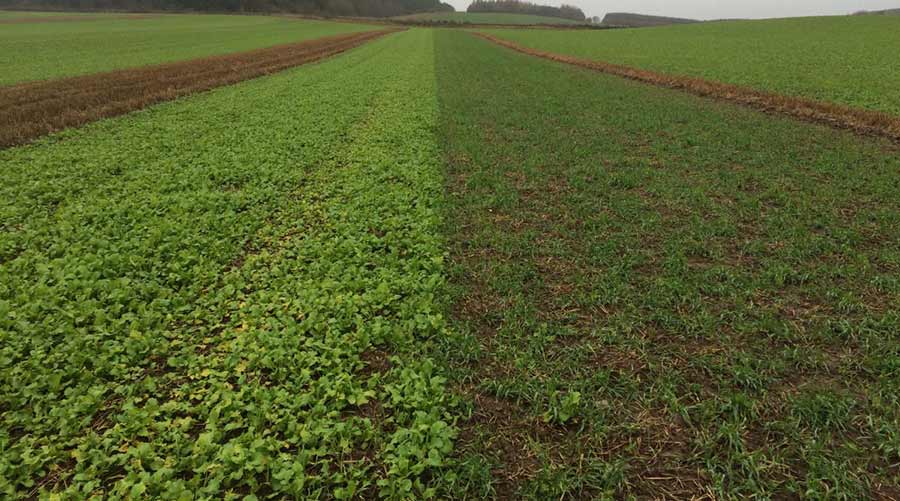Scottish cover crop trial shows lift in spring barley yields

A Scottish trial has revealed that growing cover crops can lift yields by up to 0.6t/ha in a following crop of spring barley.
The three-year trial compared crops of Concerto spring barley drilled after one of seven different cover crop mixes with a plot of overwintered stubble.
See also: How to get the most from Avadex this autumn
Over the trial period, as well as improved organic matter and overall soil conditions, the seven cover crop options led to barley yield increases of up to 0.6t/ha by the third year.
In particular, oil radish showed the most impressive results overall, followed closely by a radish mix (oil radish and tillage radish). The impact from the over-wintered stubble was minimal in comparison.
Blair McKenzie, soil scientist at the James Hutton Institute who carried out the work, highlighted that the cover crops faced three very different winters.
“The winter of 2015-16 was one of the wettest on record, while 2016-17 was nearer average and 2017-18 had a very cold finish with the ‘Beast from the East’ in late February.”
“This meant that the state of the cover crops going into March also differed between years. Despite this, the soil conditions and barley yield were consistently better under the cover crops than in soil that had been left with cereal stubble over winter”.
Barley establishment
The cover crops were ploughed in April and the fields drilled with Concerto shortly afterwards. Years one and two showed a good increase in organic matter and reduced erosion risk on the cover-cropped areas.
The cover crops used in the trial were Jupiter turnip rape; Kings Structure mix; Defender oil radish; radish mix (oil radish and tillage radish); Kings Vitality mix; vetch and rye and Kings EFA mix (mustard and oats).
The trial started in the autumn of 2015 at James Hutton Institute’s Balruddy Research Farm in Dundee and was conducted with Frontier and Kings Seeds.

